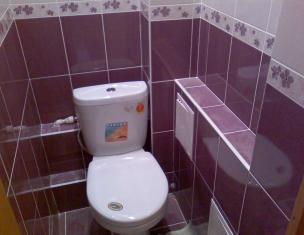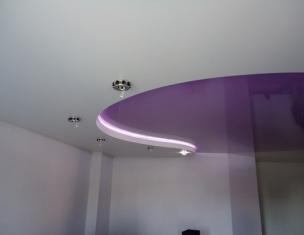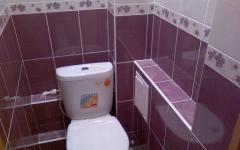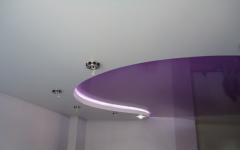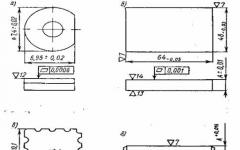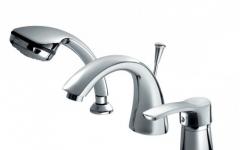Currently, chandeliers, in addition to their main task - to illuminate the room, also perform the function of an element of decor. Not only safety, but also the degree of illumination of the room and its interior depend on how correctly the installation of the chandelier is made.
Before you start installing a chandelier, you need to think about which model to choose, to estimate how it will be in harmony with the interior of the room. Since the assortment of this product in stores is quite wide, before buying, you need to familiarize yourself with the types of chandeliers and the materials from which it can be made.
Types of chandeliers
There are the following types of chandeliers:
- Ceiling (plafonds). These chandeliers are perfect for almost any room. Plafonds are usually presented in the form of a ball, square or cube, made of plastic or glass. Plafonds can be represented not only in various forms, but also in various colors.
- Hangers. Usually installed in the kitchen or in a large living room. Such chandeliers are attached to a cord, chain or string. Made from glass, fabric or plastic.
- Classic. It will look great in a spacious room with a high ceiling. Distinguished by their sophisticated and luxurious look. They are made of crystal, metal, glass, etc.
Types of fasteners for chandeliers
The question of how to hang a chandelier if its owner does not have special knowledge in electricity is asked by many. First you need to determine what type of fastener is present on the lighting fixture.

Hook for fastening
Usually, the type of fastener depends on the design of the chandelier and the materials from which it is made. The main types of fasteners are as follows:
- wall;
- Ceiling;
- Embedded;
- Mixed.
Ceiling fasteners are considered the most common and easy to install. The most difficult will be the installation of a chandelier with built-in and mixed fixtures.
Installation of a chandelier, regardless of the fasteners on which it will be attached, must be carried out according to certain rules:
- Before installing the device, the power supply must be switched off. This is the most important condition, since all actions aimed at installing a chandelier and working with wiring can be life-threatening.
- All bare wires and metal parts of fasteners must be insulated;
- When installing the chandelier directly, it is better to remove all the shades, in order to avoid their falling. In addition, it is much easier to install a chandelier without weighty elements than with them.

Standard ceiling mount
Tools required for installation
One person can hang a small chandelier, but there are models weighing 8-10 kg, in which case it is recommended to install the device together. During operation, the following tools may be needed:
- Stepladder, table or chair. You can use a nightstand or other securely fixed object that can support the weight of an adult;
- or , depending on the material on which the device will be mounted, as well as the thickness and strength of the walls or ceiling.
- Stationery knife, hammer, pliers, screwdrivers, screwdriver, electrical tape;
- Self-tapping screws, anchors, dowels, screws (depending on fastening).
How to hang a lighting fixture on the wall?
The wall mount is a metal fastener that can be easily mounted to almost any surface. To install the luminaire on a wall mount, you must:
- Attach the body of the lighting device to the wall;
- Mark on the wall the points where it will be necessary to make holes;
- Make holes using a drill or puncher;
- Attach the case to the wall;
- Through the terminal block, connect the device to the mains. The terminal block is located inside the luminaire and is a small case in which the contacts necessary for fastening wires and cables are located;
- Assemble the lamp and check its operation.

Preparing the wiring for the chandelier
How to hang a chandelier on a ceiling mount?
Before you hang a ceiling chandelier, you need to understand what type of fasteners it has. Usually, ceiling mounts are presented in two types:
- In the form of a hook. A chandelier with such a mount will be hung on a hook, securely
- screwed into the ceiling.
- Plank-shaped. In this case, the bar is firmly mounted in the ceiling, and then a chandelier is attached to it.
Both fastener options are the most common, and their installation is quite simple and does not require special skills and abilities. Very often, the hook is mounted on the ceiling during the construction of the house.
Installing a chandelier on a ceiling hook
If the ceiling hook is not provided, then you can install it yourself as follows:
- Drill a hole;
- Screw a metal anchor into it;
- Screw the hook;
- Insulate the hook with electrical tape. This procedure is carried out for security purposes.
- Check for strength and hang the chandelier.
If the ceiling is wooden, you can use a self-tapping hook that is directly screwed into the ceiling.
The ceiling hook is considered the most reliable mount that can withstand even the heaviest lighting fixture.

Hole for a chandelier in a stretch ceiling
Installing a chandelier on a mounting plate
Before you hang the chandelier, you need to fix the bar. For this you need:
- Attach the bar and mark the place of its intended attachment;
- Make holes;
- Put dowels;
- Screw the bar with screws;
- After making sure that the wires are de-energized, connect the wires to the electrical wiring of the house;
- Hang the chandelier so that the decorative cap fits snugly against the ceiling surface.
If there is a hook at the installation site of the bar, it must be bent to the ceiling so that it does not interfere.
Cross bar mount
The cross bar, in fact, is a kind of mounting. Its advantage is that due to its larger coverage area and more holes for which it is attached to the ceiling, the cross plank holds massive chandeliers better. Thanks to these factors, it is a better holder than a regular plank.
Its installation is carried out according to the same rules as on a rectangular bar, with the only difference being that more holes will have to be drilled, usually four.

Hook fastening in a hole
Installation of a chandelier on a false or stretch ceiling
The scheme for connecting a chandelier to a plasterboard ceiling is slightly different from mounting it to a regular ceiling. If it is necessary to attach a heavy chandelier to a hook, then a small hole is made in the drywall through which the hook will be mounted into the concrete surface. This is not difficult to do with a special nozzle for a puncher, for example, wood crowns. It is impossible to mount the hook directly on suspended or stretch ceilings.
If a small device is attached with a strap, then installation can be done using plastic or metal fasteners on the drywall sheet itself.
Features of installation on a false or stretch ceiling
It is better to take care of the fixture for the chandelier before the tension of the new ceiling, so it is very difficult to make a high-quality installation of the lighting device on such a ceiling, especially if the chandelier is supposed to be installed independently. The fact is that when creating a hole in a stretch ceiling, the fabric or film begins to spread over time.
For a chandelier installed on such a ceiling, only LED lamps are suitable, since stains appear on the ceiling from ordinary light bulbs.

Installed chandelier on a stretch ceiling
Is it worth doing the installation yourself?
Should I call an electrician or can I hang the chandelier with my own hands? This question is the most relevant for owners of a new lighting fixture. In general, following the instructions, anyone can hang a chandelier on their own. An important condition is the observance of safety regulations and the de-energization of electricity during the work performed. If the chandelier is large in size or weight, then it is better to do the installation with two people.
In some cases, for example, when installing the device on stretch ceilings, uncertainty about the reliability of the built-in hook, etc. it is better to turn to professionals.



